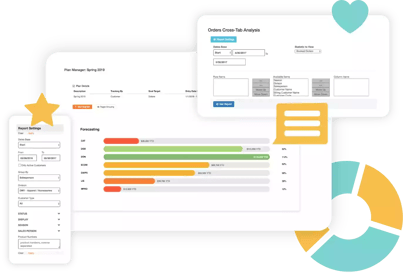Unlock Success: Drive Financial Performance with Proven Strategies.
Higher profits should always be the goal of owners and leaders of an organizations, but profits don’t just happen and upper quartile financial performance never just happen. I have often seen leaders that are afraid of pushing “profits” as one of the top goals of their company. They extoll culture, values and the soft side of management. Nothing wrong with that, but the objective of delivering financial results year after year needs to be first and foremost. Profit is not a dirty word and the idea that you are on business to make money should be accepted as Job One for every business.
Keep Tight Books – Have A Great CFO – Use Outside Accountants
There are many factors that drive financial performance. The marketplace, the health of your brand, the strength of your leadership team, the effectiveness of your processes and procedures and the overall competencies of your organization. All these factors affect the ultimate financial performance of your business. 
One of the most important competencies of any successful business is the ability to plan, manage and to deliver strong financial results.
Tight books ensure that financial records accurately reflect a company's financial transactions and provide a clear and reliable picture of financial health.CFOs and outside accountants bring specialized knowledge and expertise in financial management, accounting principles and regulatory compliance to ensure accurate financial reporting and strategic decision-making.
Also, a great CFO offers strategic financial guidance, helping to develop long-term financial plans, identify growth opportunities, and manage risks effectively. External accountants can also provide strategic advice and support in areas such as tax planning and financial forecasting.
Understand Your Financial Performance Metrics - P&L Intimacy
Understanding your financial performance metrics starts with understanding the profit and loss statement (P&L), also known as the income statement. The profit and loss statement provides a summary of a company's revenues, expenses, and net income (or net loss) over a specific period, typically quarterly or annually.
Understanding the income statement helps stakeholders make informed decisions about the company's operations, investments, and strategic direction. For example, managers can use income statement data to identify areas for cost reduction or revenue enhancement.The income statement reflects the financial health of a company by showing its ability to generate profits. Consistently positive net income indicates profitability, while sustained losses may signal financial trouble. Investors and creditors rely on income statement information to assess the company's viability and potential risks.
The income statement provides valuable insights for financial forecasting and planning. By analyzing past performance and identifying trends, companies can develop realistic projections and set achievable goals for the future. So, when you want to know if you’re in the red or in the black, you just flip to your P&L and look at the bottom line. Your P&L starts with a summary of revenue, the details costs and expenses, and presents the all-important “bottom line” – your net profit . . . or loss.
Understanding the income statement is critical to evaluating a company's financial performance and profitability. It provides insights on revenue generation, cost management and overall operational efficiency, helping stakeholders make informed decisions about the company.
What Gets Measured Gets Done – Have Robust Decision Based Financial Reporting
Financial Reporting is all about providing managers the essential financial data required to manage costs and expenses. Financial reporting is an essential driver of financial performance, and it promotes transparency, accountability, and informed decision-making.
Every successful organization has a disciplined annual budgeting process. The annual budget process is a strategic planning process in which a company sets financial goals and allocates resources for the next fiscal year.
This includes forecasting revenue and expenses, setting targets for key performance indicators and developing detailed plans for using funds to achieve business goals. A budget serves as a roadmap for financial management and helps monitor and control spending throughout the year. It should be annual, simple – led by the CEO and managed by the CFO. I have always begun the process early in October with the goal of having a final financial plan completed by mid-November.
Perform “Gross Margin Magic” – It is not just sales growth-It’s GM growth.
Sales Growth and Gross profit Margin are two important metrics to drive business performance that a company closely monitors to assess its financial performance and profitability. Sales Growth is the percentage increase in sales over a certain period of time, usually measured quarterly or annually. It indicates how quickly a company's sales are growing, reflecting the effectiveness of its sales and marketing efforts, customer demand and market penetration. Higher sales growth typically means business expansion, greater market share, and potential long-term profitability.

On the other hand, Gross Margin represents the percentage of sales over Cost of Goods Sold (COGS), or simply put, the profit earned per unit sold after taking into account direct production costs. It is calculated as (Sales - COGS)/Sales expressed as a percentage. Gross Margin reflects the efficiency of a company's production or service delivery processes and its ability to generate profits from its core operations. A higher Gross Margin means the company can keep a larger portion of each dollar of sales after covering production costs, which helps improve overall profitability.
Too often businesses look at Sales Growth as the Holy Grail. Sales increases should be the result of improved sales strategies, product and line improvements, better marketing programs that don’t impact gross margins. Sales increases can also be driven by price discounting, guaranteed sales, the selling of close outs, or higher levels of costly promotional activity that adversely affect gross margins. I learned a long time ago that the real Holy Grail is not Sales Growth but the growth in Gross Margins.
Manage the Hell Out of Your Inventories – Pricing, Line Size, Buys, Cuts.
Proper inventory management ensures you have the right amount of inventory on hand, minimizing excess inventory that ties up cash and avoiding stock-outs that can lead to lost sales.
Additionally, efficient inventory management helps minimize transportation costs, storage costs, and the risk of obsolete or expired inventory, ultimately increasing profitability.
Maintaining optimal inventory levels ensures timely fulfillment of orders, shortens lead times, and increases customer satisfaction by providing products when needed. Effective inventory management streamlines processes, reduces human errors, and improves inventory visibility, resulting in smoother operations and greater productivity.
Also, accurate inventory data enables better forecasting, pricing strategies, and resource allocation, leading to informed decision-making and long-term business planning.
Over the years, I have witnessed many organizations get into trouble due to poor inventory management. Plan your seasonal inventories and buys by category and by style. When the season is ending, aggressively liquidate obsolete inventories and non-continuing styles.
Tightly Manage Your Expenses – Use Zero Based Budgeting
Zero-based budgeting (ZBB) should be the primary budgeting tool for managing expenses and for driving profit (and business performance) within your company. I would recommend that every business adopts a ZBB process. It is a repeatable process that rigorously reviews every line item and questions every dollar planned in the annual budget. A ZBB process helps build a culture of cost management among all employees. ZBB requires that managers develop deep visibility into cost drivers of their line items and use that visibility to set aggressive yet credible budget targets.
In summary, tightly managing expenses and the use of zero budgets require careful monitoring, prioritization of expenses, a focus on value creation, and a commitment to continuous improvement to optimize resource allocation and improve financial performance.
Cash Flow - Don’t Get into Financial Trouble by Over Leveraging the Business
Cash Flow Management is the process of monitoring, analyzing, and optimizing a business's cash inflows and outflows to ensure that the business has sufficient liquidity to meet short-term obligations and achieve financial goals. This includes managing cash inflows from sources such as sales and investments, controlling cash outflows from expenses and payments, forecasting future cash needs, and mitigating risk to maintain financial stability and support business growth.
Cash flow management is vital because it ensures a business has enough cash to meet its obligations, invest in growth, stabilize operations, service debt, make strategic decisions, manage risks, and maintain stakeholder confidence.
But, Cash Flow Management is part art and part science. Beyond basic profitability, having enough cash on hand at a given time can often make or break the success of a business. Even if your business is profitable, rapid growth can cause cash flow issues.
Plan & Manage to Achieve Higher Levels of Income & Overall Financial Performance - Every Year - Year Over Year
Driving Financial Performance requires optimizing revenue generation, effectively managing costs, maximizing profitability, maintaining healthy cash flow and making strategic investment decisions to achieve long-term growth and value creation for the company and its stakeholders.
Driving Financial Performance requires strong “Bottom Line” minded leadership and a management team that is aligned and dedicated to delivering improved financial results. As earlier stated:” What Gets Measured Gets Done” has a corollary: “What Gets Managed Gets Done.”
Every Profit & Cost Center Must Be Under the Control of a “C” Level Manager or Director
It may be beneficial to assign each profit and cost center to a "C" level manager or director for several reasons. A "C" level manager or director typically has a deep understanding of the organization's overall strategy and goals. By bringing profit and cost centers under their control, you ensure that these departments are aligned with the company's broader strategic direction. Additionally, encourage accountability by holding "C" level managers or directors accountable for profit and cost centers. These senior managers are responsible for the financial performance of their respective areas, thereby encouraging them to make decisions that improve profitability and cost efficiency.
A "C" level manager or director typically has the authority to make strategic decisions that affect the financial performance of his or her division. By putting profit and cost centers under their control, you empower them to make timely decisions, optimize performance and drive results. Also, placing profit and cost centers under the control of a "C" level manager or director can facilitate coordination and collaboration between different parts of the organization. Leaders can work together to align goals, share best practices, and leverage synergies to improve overall financial performance.
The “C” level manager or director is responsible for communicating financial performance and key metrics to senior management, the board of directors, and other stakeholders. By centralizing control of profit and cost centers with these managers, you can streamline communication and reporting processes. Overall, these Senior Managers oversee Line Managers in their execution of the budgeting, spending, tracking and their controlling of the results on each Cost or Profit Center.
Each Line Item Expense Should Have an Answerable “Line Owner”
Accountability drives good financial decision making. While Senior Managers are accountable for the results of their cost center, every line item on the P&L must have an “owner.”
Designating a responsible “line owner” for each line item expense ensures accountability, transparency (helps prevent confusion and ensures that decision-makers have clear oversight of how funds are being allocated and spent) and effective management of expenses, resulting in better cost control, improved decision-making and optimized resource allocation. Designating a line owner can help reduce financial risk by ensuring that those in their area of expertise are actively monitoring and controlling expenses. Line owners can identify potential risks or omissions early and take corrective action to prevent negative impact on the organization.
Build A Strong Relationship with Your Source(s) Of Financing – Insure True Transparency and No Surprises
Your bankers, financiers, and/or your sources of capital are crucial in the financial management of your company. Let’s face it - you need their support and their support is dependent on their understanding of your business. Strong relationships with lenders or investors can increase your credibility and improve your ability to obtain capital when you need it. Lenders and investors are more likely to provide capital to companies they trust.
Also, maintaining open communication and transparency with financiers can lead to more favorable financing terms, such as lower interest rates, longer repayment terms, or higher credit limits. This can result in cost savings and increased financial flexibility for your business.
Building strong relationships with financiers allows for better risk management. By keeping them informed about your business operations, financial performance, and potential challenges or opportunities, you can work together to proactively solve problems and reduce risk.
Additionally, being transparent and honest with financiers builds trust and strengthens your reputation in the financial community. This can lead to positive recommendations, referrals, and future funding or partnership opportunities.
Strong relationships with financiers make it easier to comply with reporting requirements and financial metrics. By providing accurate, timely financial information, you demonstrate your commitment to transparency and accountability, thereby increasing trust.
Conclusion
By implementing these proven strategies and continually monitoring and adjusting your approach, you can drive financial performance and position your organization for long-term success.
Share this
You May Also Like
These Related Stories

Join RepSpark CEO Dac Clark at Agenda Long Beach

5 Ideas to Diversify Your Marketing Strategy


